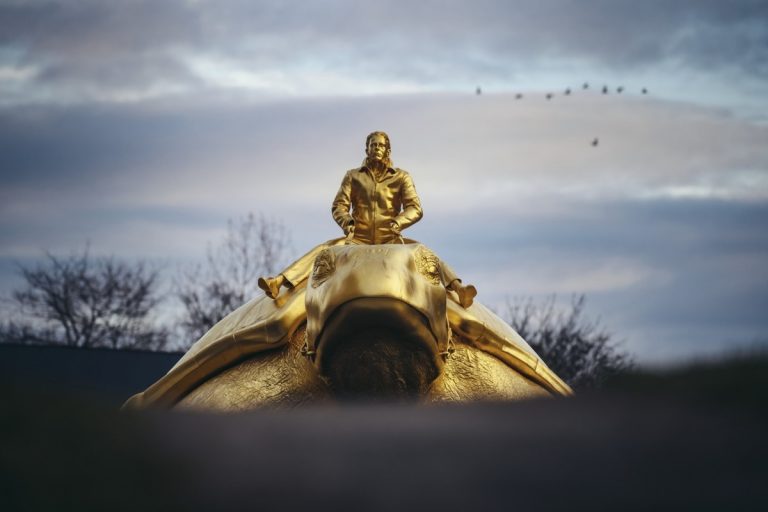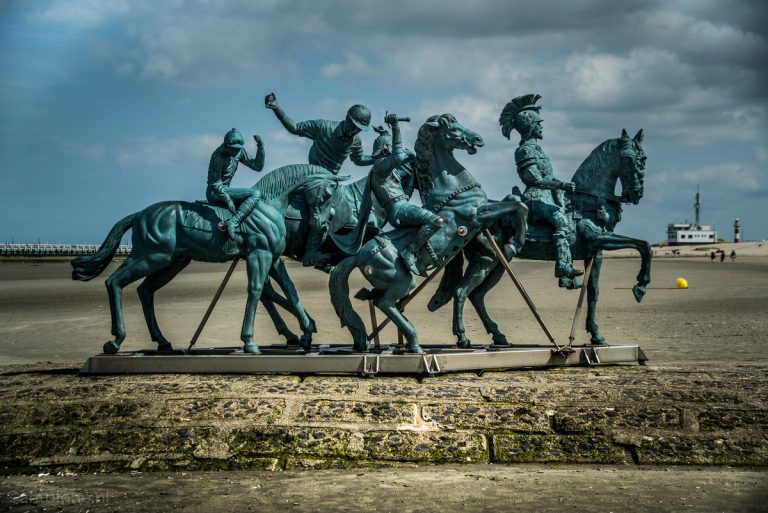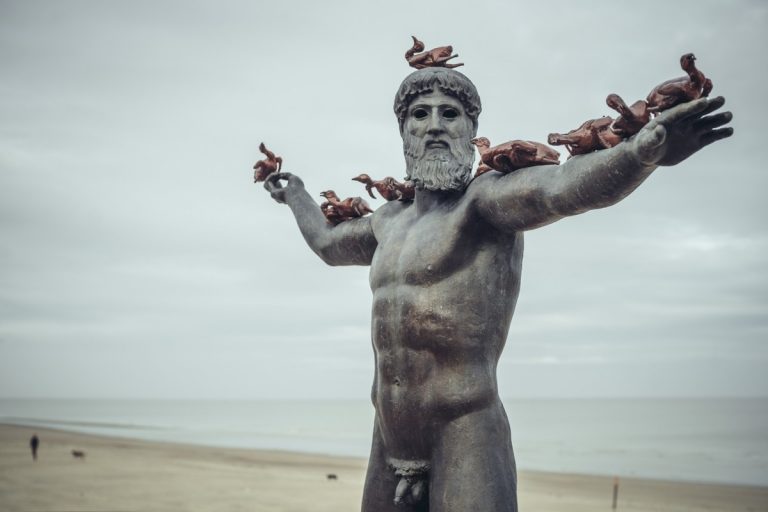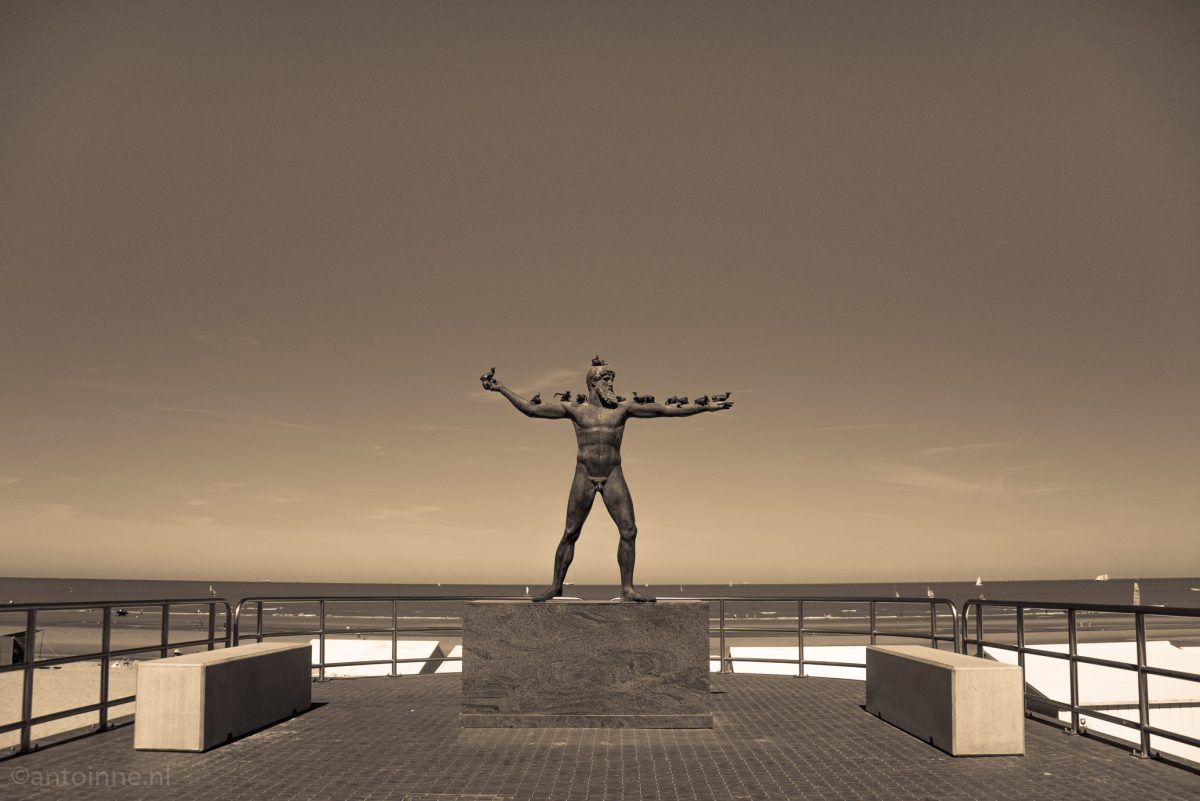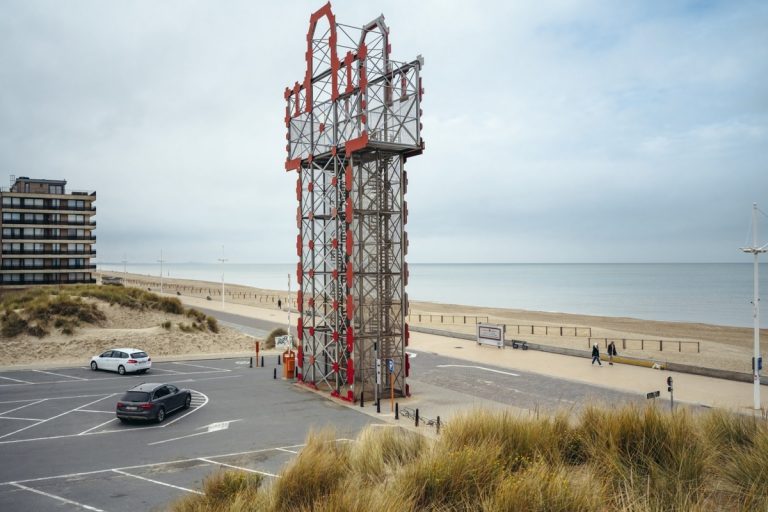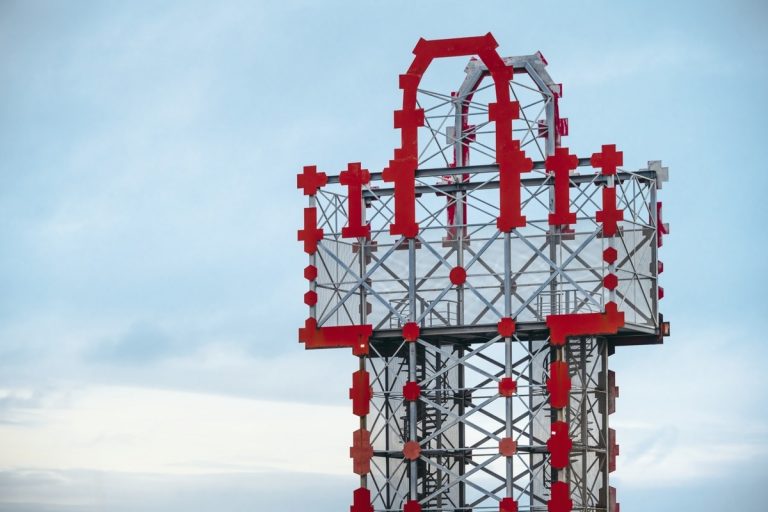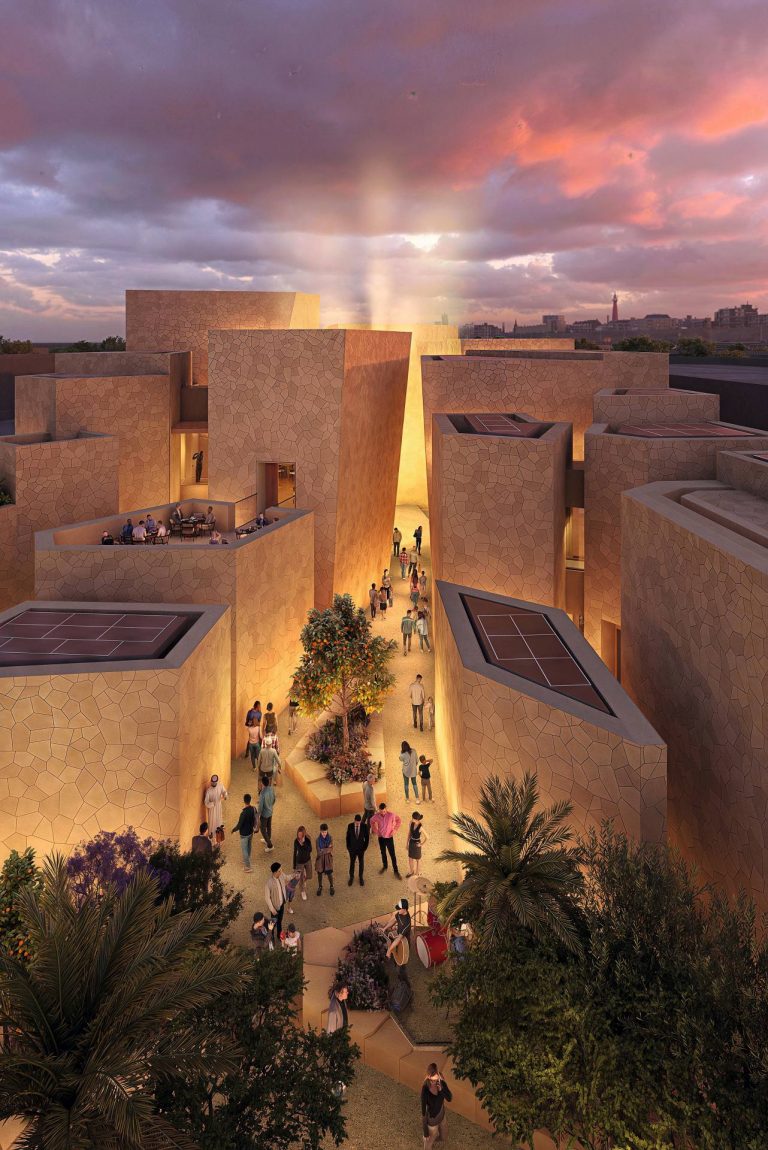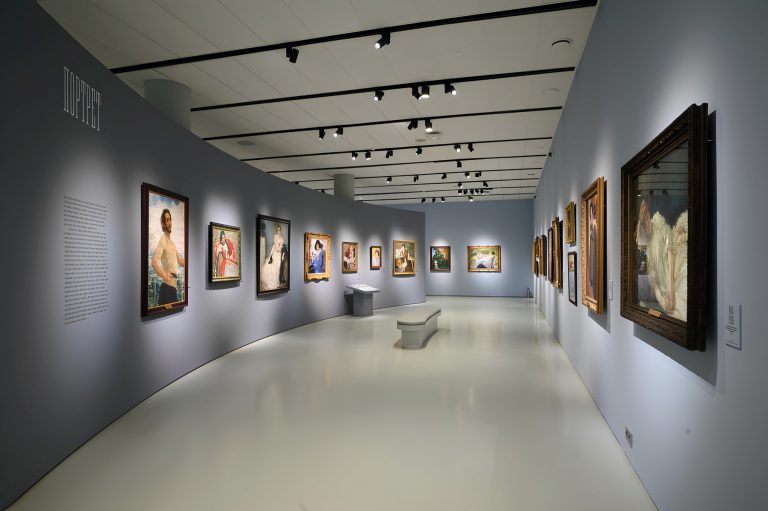Every three years, the 67 km of coastline of Belgian Flanders for six months turn into an exhibition of modern monumental art in the open air called «Triennale Beaufort». Along the dams, beaches and dunes, at a great distance from each other, are the works of artists and sculptors inspired by the sea and the stories of people.
The history of Beaufort Park began in 2003 with the first Triennale, dedicated to the idea of the interaction of sculpture and the sea. For Belgium, such a concept does not seem speculative, remembering that the territory of that country with the present Netherlands belonged to the boundaries of the historical Low Lands – a region of living space, conquered by people by the sea. And even the name of the province, Flanders, contains the ancient Germanic root, which denoted a concept close to flooding: before man curbed the water element and secured the land in this part of Europe, the powerful tides were as routine as sunset and dawn.
The name Triennale is another reference to the marine theme. Beaufort is not the name of some picturesque Flemish place. This is a courtesy to the British admiral and military hydrographer, Sir Francis Beaufort, who in the early 19th century invented and established a 12-point scale for assessing wind strength from becalmed to hurricane. In Belgium, the invention was presented at the first-ever international meteorological conference in Brussels in 1853.
The concept of «Sculpture and the Sea» became the cornerstone theme of this Land Art Festival, which by November 2021 had already passed through seven «editions». After each triennial, the park’s sculpture collection is replenished by the activity of the coastal municipalities. They try to negotiate with artists and leave their most successful creations in Belgium to continue to impress the imagination of local residents and tourists. There are exceptions, though. For example, in 2006, the Ostend City Council had failed to agree on a price with the American Louise Bourgeois, whose spectacular work as a giant spider was installed at the time of the triennial in the local cemetery above the grave of the famous Belgian artist James Ansor (1860-1949). The Canadians were more generous, and now the bronze «Maman» decorates the space next to the National Gallery in Ottawa.
However, today in the art space of the park Beaufort there are about four dozen monuments of art. I will tell just ten short stories in which the proximity of sculpture and the sea stimulates the imagination of the viewer.
Jan Fabre (Belgium)
«In Search of Utopia»
2003 / Newport
One of the most striking works of the first triennale was originally installed on the embankment of Newport. However, the gilding of the giant turtle with its mounted painter constantly suffered from wind and sand. In 2018, the restorers even had to re-cover it with gold leaf. Therefore, the sculpture was moved to a more weather-protected place, on one of the city squares, specially arranged a small water space next to it to support the author’s dialogue with the sea.
Nina Bayer (Denmark)
«Men»
2018 / Newport
The work of a Danish artist on the coast must be perceived in contrast to the tide game, thanks to which once a day a group of riders first hides in the waves, and then again comes out of the water. For her, Nina Bayer has combined several original but no longer used equestrian sculptures. Since ancient Rome, such monuments have been the embodiment of the power of rulers and generals, but the all-consuming sea is not ready to reckon with the vanity of man and makes us think about the fragility of being.
Xu Zhen (China)
«Eternity – Poseidon»
2018 / De Haan
The Chinese artist reproduced a famous Greek statue dating back to the 5th century B.C. The original was discovered in 1928 near Cape Artemision in the Aegean by sponge divers. To which ancient god this masterpiece was dedicated, it is now impossible to set – after all, the weapon of the deity has not reached us. It is believed that it is either Zeus or Poseidon, but for the concept of Beaufort Park, of course, better suited Lord of the Sea. On the giant’s arms and head, Xu Zhen placed a dozen Beijing-colored ducks that symbolise China’s ancient culture.
The sculpture allows for various interpretations on the subject of both cultural differences between Europe and Asia, and historical accuracy, because the basis of the work is the image of a deity, the identification of which is still mysterious.
Anne and Patrick Poirier (France)
«Water slide»
2003 / Koksijde
The French art duo is known for being inspired by fragments of the past, ruins, monuments of history and archaeology. This 21-metre galvanised steel structure is nothing more than a vertical model of the plan of the three-nave church of the Cistercian Abbey of Notre Dame de Dune (Notre Dame in the Dunes) Koksijde, which was destroyed by iconoclasts in the 16th century. The installation is an impressive coastal landmark.
Marguerite Humo (France)
«Dancer V, or Marine Mammal, Summoning Higher Spirits»
2021 / Blankenberge
The French artist, who calls herself «Indiana Jones of the Google era», is known for formulating fictitious scientific hypotheses, from which her works then appear. One such speculative theory is that global warming can lead to the emergence of spirituality among animals. Humo expressed her proposal in a series of sculptures, one of which is «Dancer V».
The sculpture of a futuristic sea mammal, as if participating in a ritual dance, organically intertwines with the history of Doggerland. So archaeologists call the area inhabited by ancient people land, which is about 8000 years ago, in the Mesolithic era, went to the bottom of the North Sea near the present Belgian coast due to a natural disaster.
Eventually, the sculpture will be installed on a new breakwater in Blankenberg, which is being created to prevent silting of the port.
Photo: beaufortbeeldenpark.be

